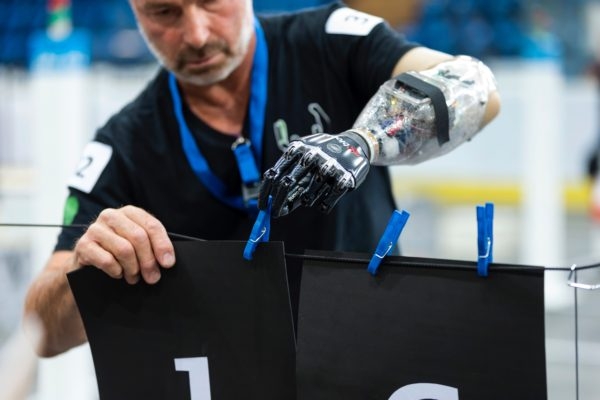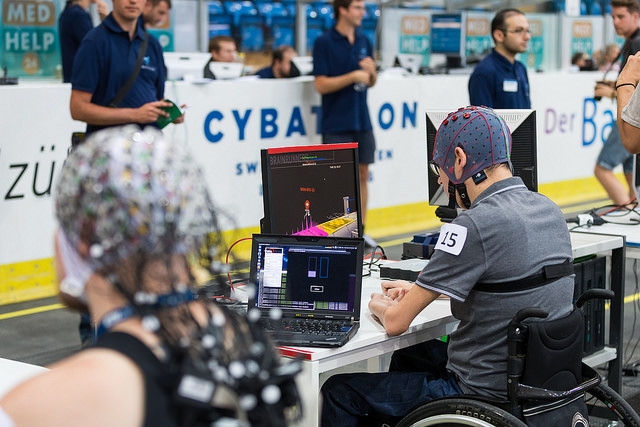New wisdom: According to the author of this article Cate Lawrence, source readwrite, compiled by the new wisdom exclusive compilation, refused to reprint without permission!

In a few weeks, the 2016 Paralympics will kick off. Well-trained athletes are already prepared and they will compete with other disabled people on 528 projects. These include wheelchair basketball games, blind football games and kayaking.
With the highly specialized training and competition equipment, many people began to question: What is the position of these technologies in the Paralympic Games?
At the Vista 2013 conference, participants designated 2013 as the “Material and Scientific Paralympic Games†year. At the conference, spokespersons, contestants and sports enthusiasts raised a series of thought-provoking questions: After spending a lot of money to build high-end technology, can we see the equivalent high-end equipment in the Paralympic Games? Will those more affluent countries swept the medals list because they may have more money for research and development to "enhance the competitive level" of technology? In addition, there are people who question the role of science and technology in the competition and want to know whether their performance will exceed the pure level of competition that athletes have.
Former Paralympic swimmer Brendan Burkett is currently Professor of Biomechanics at the University of the Sunshine Coast. She once said: "We still want to retain the essence of sports and sports while improving the performance of sports. But we do not want robots to restrain the sport itself. We still want people to control the overall situation."
However, this argument is not valid under the background of the Paralympic athletes' lack of sponsorship, low ticket prices, and much less TV live streaming resources than the Olympic Games.
However, things still have a turn for the better.
The first "semi-robotic" Olympic Games will be held in Zurich, Switzerland, on the 8th of October. At that time, we will witness 74 athletes from 25 countries competing on the same stage - they will show it in real life. The Robotics Society will How to help them.
Power wheelchair obstacle race
In this obstacle race, four contestants will compete in parallel tracks and strive to complete six different missions in the shortest possible time. For example, in a prosthetic obstacle race, they must complete tasks such as climbing a star-shaped object, crossing an obstacle, and so on through their own movements. Athletes with prosthetics can exhibit good agility in many tasks that require mobile skills.
In powered wheelchair projects, wheelchairs will be controlled by joysticks, voice, tablet, or other technologies, allowing players to seek out some creative solutions to the challenges of everyday life. However, it is worth noting that the athletes participating in this project must be spinal cord injury, bilateral leg amputation, or those who cannot walk due to other serious injuries.
Dynamic Exoskeleton Obstacle Race
In the "semi-robotic" Olympic Games, many comfortable and flexible exoskeleton equipment can help athletes to easily and reliably complete various movements in daily life, even climbing stairs and walking on uneven ground. However, only those athletes who suffer from spinal cord injury and who have leg paralysis can participate.
Brain Machine Interface (BCI) competition
The brain-computer interface recognizes signals from different layers of the deaf person's brain that they want to move. In this virtual game, the players can control the role by controlling their own ideas in a specially designed computer game (Avatar). As long as they send the right signals at the right time, Avatar will overstep the obstacles without fail, or it will accelerate. The wrong signal will cause Avatar to slow down or hit other objects. Almost all teams use the technique of electroencephalography to identify brain signals, but other methods including infrared spectroscopy are also allowed in competitions.
The "semi-robot" movement provides an excellent platform for the development of novel and practical assistive technologies. At the same time, it also breaks down the barriers that people have with disabled people, ordinary people and technical experts. But this does not mean that people have become semi-robots, it is just a great opportunity to witness the birth of various high-end technologies. At the same time, we will wait and see if the semi-robot movement will have an impact on the Paralympics and whether it will attract more viewers and sponsors.
Via readwrite
Xinzhi created Lei Feng (search for "Lei Feng Net" (search for "Lei Feng Net" public number attention) "public number attention" under the focus of the public number of the robot, we are concerned about the status quo and future of robots, and associated with the robot industry. Interested friends can add micro signal AIRobotics, or directly scan the QR code below to follow!
